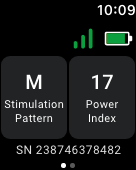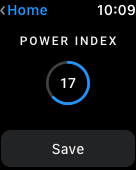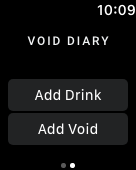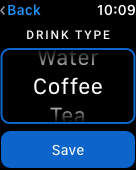Micron Medical
Introduction
Design brief
Micron Medical is a medical device company involved in wirelessly powered, injectable neurostimulators. These are small devices implanted in the body that emit signals to help treat medical conditions. They needed a mobile app for patients participating in a clinical trial to adjust their implanted medical devices.
The Problem
Patients with implanted medical devices for overactive bladder or chronic pain have trouble controlling their symptoms since they can’t fine-tune the frequency of their implanted medical devices.
My Role
High-fidelity UI design of the mobile app and Apple Watch app. My business analyst colleagues devised the app's requirements, and my design colleague was in charge of the low-fidelity wireframes and back office administrator design.
Discovery
I learned about the company I was designing the apps for, the context of the design brief, and the patients that would be using the apps. Currently, the patients have no way of controlling the frequency and stimulation pattern of their implanted devices. Micron Medical would be needing a mobile app to allow patients to control their implanted medical devices. The frequency and stimulation of the device would dictate how frequently it stimulates the patient's nerves. This results in a stronger or weaker control of the patient's symptoms.
To get a better idea of the project's requirements, I reviewed the documentation provided by my company's business analysts. The mobile and watch apps would allow patients to connect to an external transmitter, which in turn allows the phone or watch to control the implanted medical device.
Many end users would be elderly, so I kept this in mind throughout the design process. It would be crucial to include supporting information wherever possible, to select a readable typeface, and to use high-contrast colors.
Design
These wireframes were created by my fellow UX designer, and guided my UI designs
Participants of the trial would need to use this app frequently throughout the day, so I wanted it to have a very minimal design, void of visual clutter.
These screens display the process of connecting your mobile device to the transmitter, which occurs after registration.
Given that users may not know the meaning of these terms yet, I ensured there were information icons located near the terms they correspond to. Upon clicking, there is a tooltip that explains the functionality.
Designing the calendar for the diary tab was challenging for two reasons:
1. I wanted users to know they could adjust the weeks shown in the calendar, and
2. I wanted users to be able to switch months without having to repeatedly click "previous."
Void diary for users with urinary incontinence
Apple Watch App Screens:
I designed the watch app using the official watch UI elements provided by Apple. I selected the smallest watch screen to design for. This way, I wouldn't need to worry about fitting design elements into a smaller screen later on (similar to benefits of the "mobile first" approach).
Although usability testing was not in the scope of this project, I had doubts about whether users would know how to adjust the power index, so I quickly sent a text to my friend who has an Apple Watch with an image of the power index screen. I asked what she would do in order to set the power index to 20. She said she would "scroll to change it to 20."
Conclusion
This was my first time designing an app for an Apple Watch and I learned a lot doing that. Specifically, that it's important to design for the smallest screen possible first. I also learned that unlike mobile phone designs, it's ok to leave as little as 1 px margin between the design elements and the edge of the screen! This is because Apple Watches have a curved bezel around the functional part of the screen, so there is no abrupt cut-off around the edge of the screen.
I also learned about the possible methods to change values and input information into a watch app design: tapping simple buttons (for yes or no and multiple choice questions), as well as turning the physical Apple Watch dial to adjust a numerical slider.
Now that the MVP has been designed, I'd love the opportunity to conduct usability tests for the mobile and watch apps to get valuable user data and determine ease of use.








